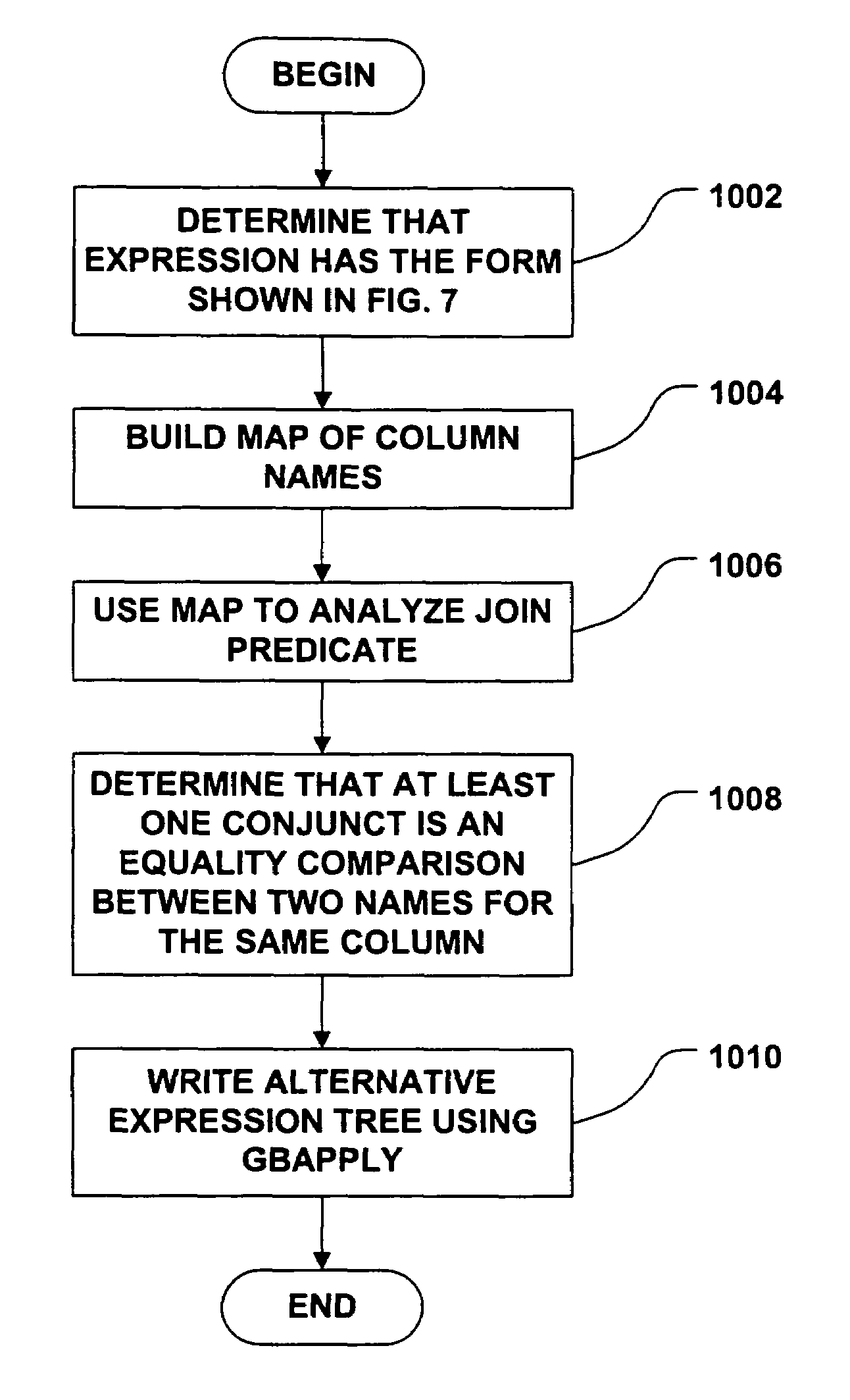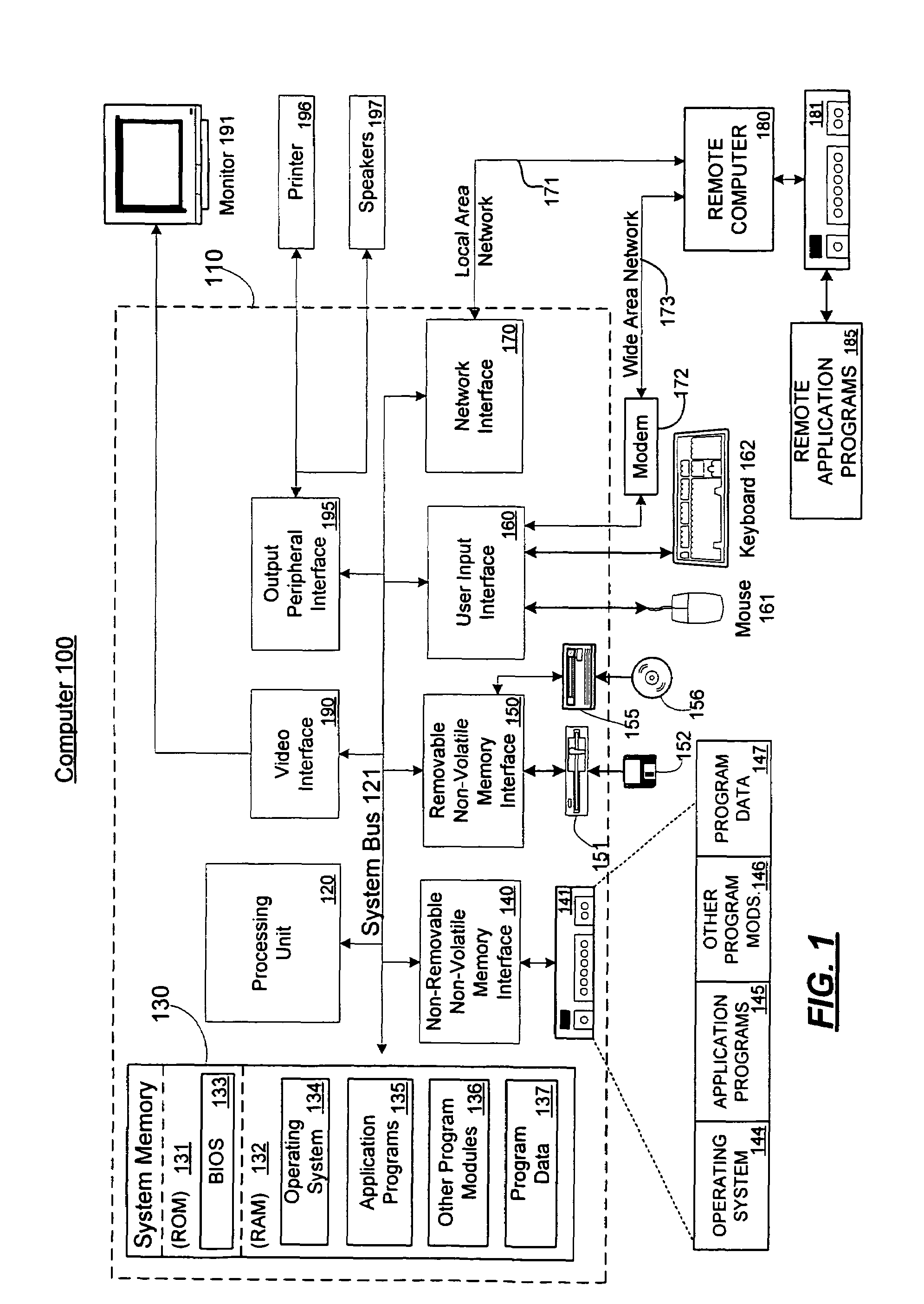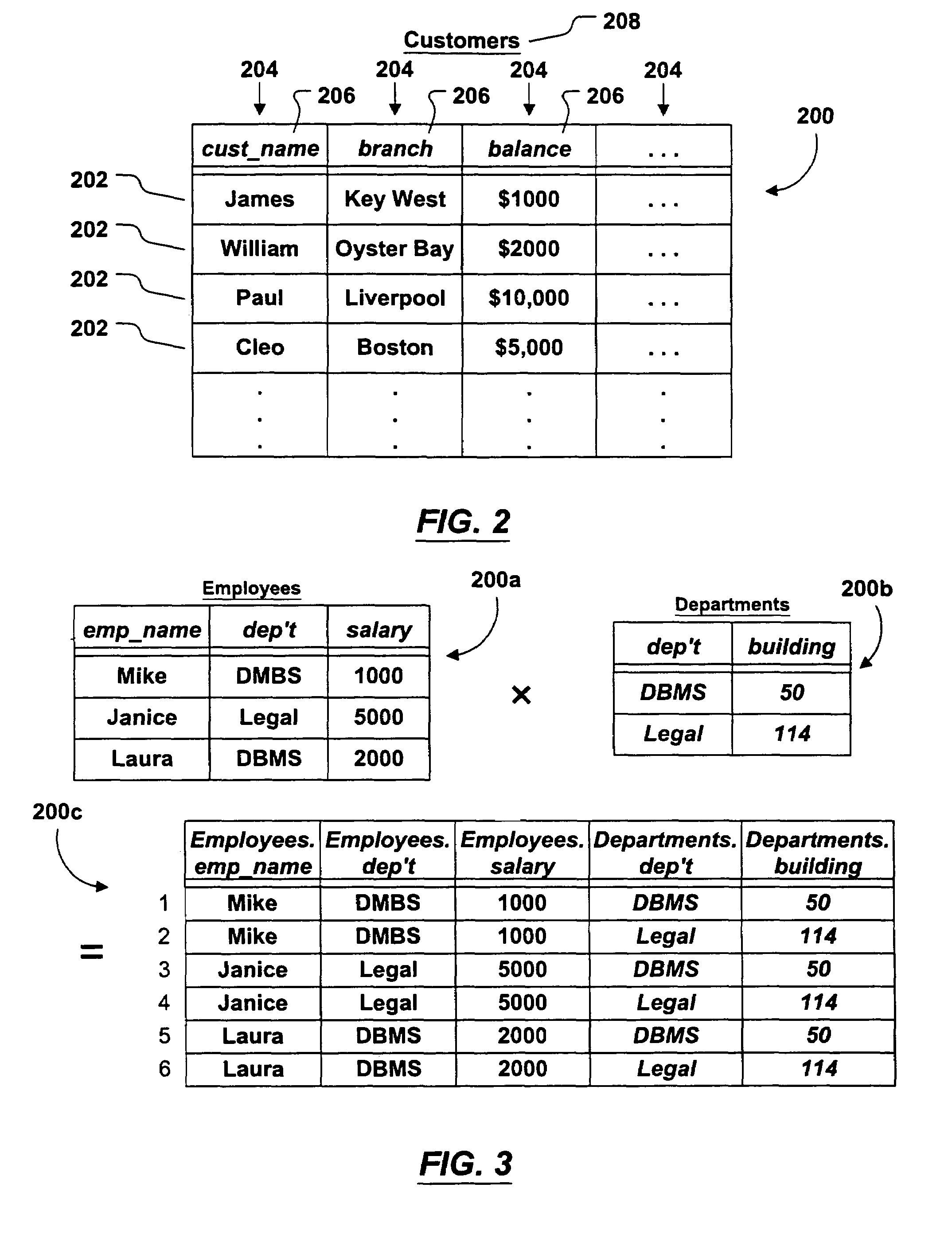System and method for segmented evaluation of database queries
a database and query technology, applied in the field of database systems, can solve the problems of large sub-expression results, costing resources, and losing the benefits of spooling, and achieve the effect of efficient query evaluation
- Summary
- Abstract
- Description
- Claims
- Application Information
AI Technical Summary
Benefits of technology
Problems solved by technology
Method used
Image
Examples
Embodiment Construction
Overview
[0031]A database system is one of the most commonly-used software tools. Database systems are used to maintain and access all types of information, such as financial records, personnel records, and inventory records. Database systems typically perform operations on information in the form of tables or “relations.” One operation that can be performed on tables is the “join,” which takes two tables as operands and creates a third table that is based on the two operands and on a predicate. A straightforward way of computing a join involves storing each operand table in memory and combining the two tables row by row. This technique uses large amounts of memory to store the operands. Often, the operand tables are so large that they must be paged to disk, thereby increasing the amount of time required to evaluate the join. By exploiting properties of the operands and the join predicate, a join can be computed without storing the entire operand table in memory at once, thereby decr...
PUM
 Login to View More
Login to View More Abstract
Description
Claims
Application Information
 Login to View More
Login to View More - R&D
- Intellectual Property
- Life Sciences
- Materials
- Tech Scout
- Unparalleled Data Quality
- Higher Quality Content
- 60% Fewer Hallucinations
Browse by: Latest US Patents, China's latest patents, Technical Efficacy Thesaurus, Application Domain, Technology Topic, Popular Technical Reports.
© 2025 PatSnap. All rights reserved.Legal|Privacy policy|Modern Slavery Act Transparency Statement|Sitemap|About US| Contact US: help@patsnap.com



